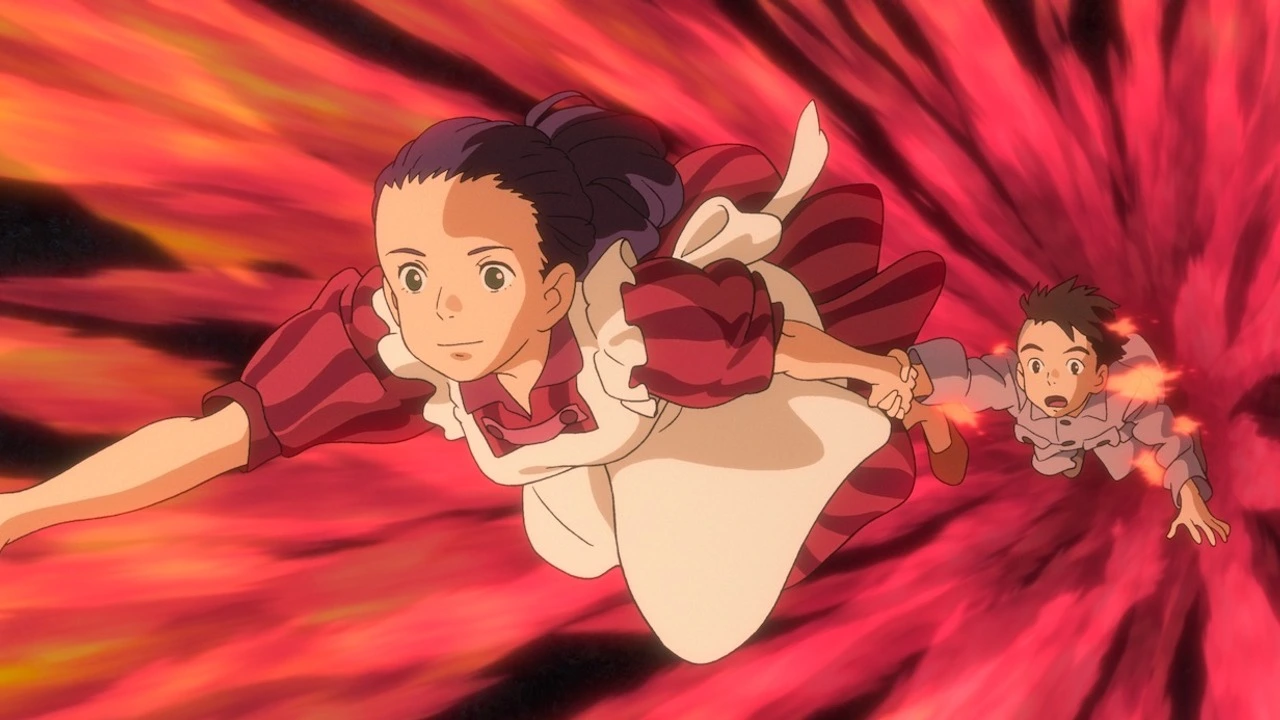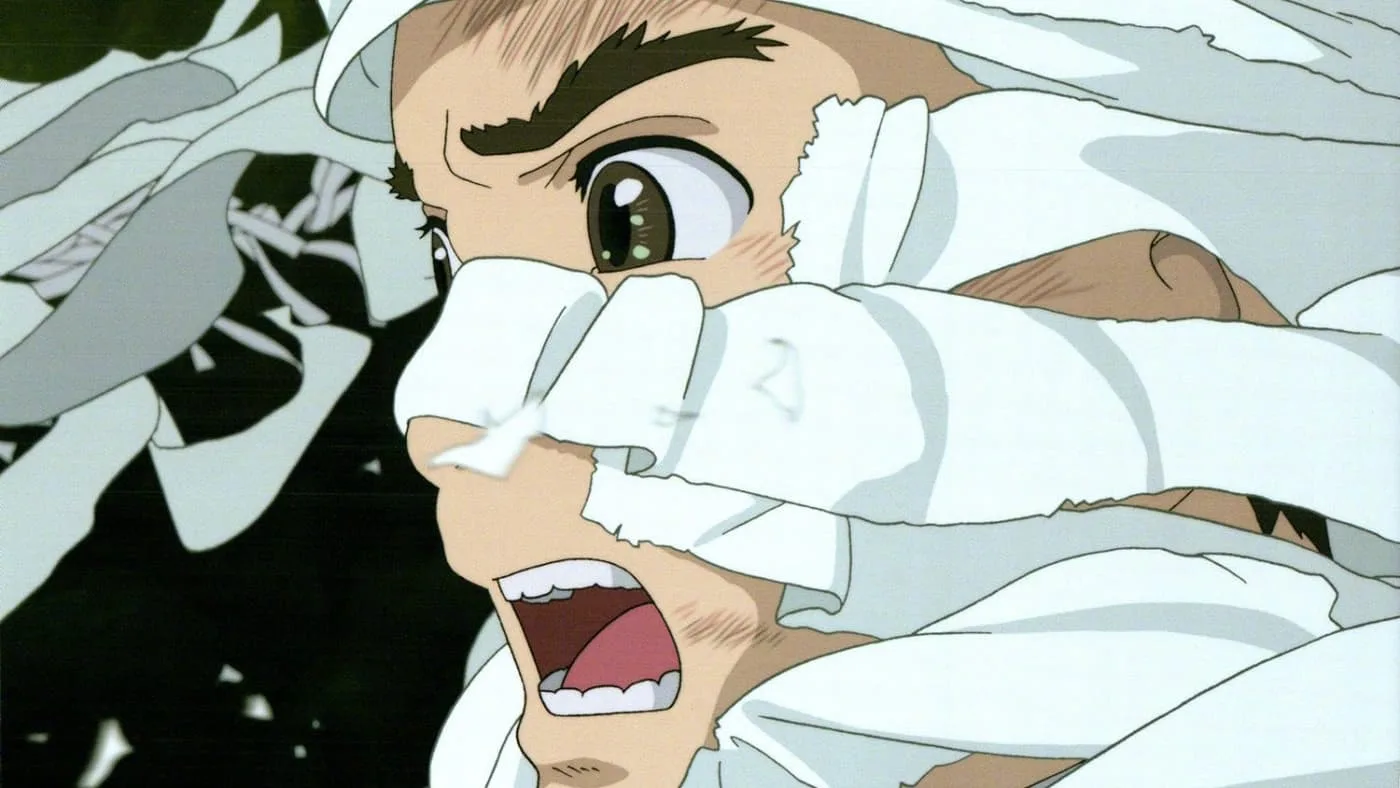The Boy and The Heron (2023) - Review
9/10
- pencil17 Dec 2023
- clock7 min read
directorScreenplay by: Hayao Miyazaki
A deeply personal, emotional, and wondrous film, teeming with imagination and full of heart

The Boy and the Heron (alternatively titled “Kimitachi wa Dō Ikiru ka” or “How Do You Live?” In Japan) is the latest animated fantastical epic film written and directed by Japanese animation legend Hayao Miyazaki. It is a coming-of-age story about a boy learning to appreciate those around him in his life, yet it is also a thought-provoking introspective work about cinema and director Miyazaki’s own legacy.
During World War II, Mahito Maki (Soma Santoki) loses his mother to a fire in a hospital in Tokyo. Following his father’s remarriage, Mahito evacuates with his new parents to his late mother’s old home in the countryside. As a 12-year-old, Mahito embarks on his new life, still plagued by thoughts and nightmares of his mother’s death. He becomes increasingly reclusive and indifferent to those around him, including his new mother, the caretakers at the new house and his new schoolmates.
While alone for most of the time, Mahito is frequently visited by a grey heron (Masaki Suda) that takes an interest in him ever since he arrived. Intrigued by the heron, he finds an abandoned tower one day while following it. Strange things start happening, from magical feathers that grant perfect aim to arrows fletched with them, to schools of fish chanting “Join us!” under the command of the grey heron. Mahito finds the grey heron mimicking his mother’s plea for help and soon receives an invitation from the heron to embark on a one-way trip into a world of the dead guarded by his Granduncle (Shōhei Hino) to save his mother.

The Boy and the Heron is an epic and much-welcomed comeback from one of my favourite filmmakers of all time. Following Miyazaki’s announcement of retirement back in 2013 when he released his then swansong, The Wind Rises, many, including me, mourned an end to an era in animation and filmmaking. He reversed this decision with a short film, Kemushi no Boro (Boro the Caterpillar), made for the Ghibli Museum, and now, with this latest fantasy film, Miyazaki is back in business.
Starting off at a slower pace, the film feels like a small-scale coming-of-age story in the first act, with occasional strangeness sprinkled on it as the mysterious grey heron comes up to Mahito from time to time. It has the gentleness of Miyazaki’s earlier works like My Neighbour Totoro and Kiki’s Delivery Service, telling an intimate story about adolescence with a fantastical edge that dazzles. Midway through the film, once Mahito embarks on his journey into the world of the dead, the film picks up its pace, and all of a sudden, just like Mahito, we are launched into a wonderful and strange world of imagination that calls to mind the weird and magical spiritual worlds of Miyazaki’s later works like Spirited Away and Princess Mononoke.
In the classic Studio Ghibli hand-drawn animation style, Miyazaki invites us once again into his imaginative mind and opens the door to a mind-bending dreamscape that I believe works best in an animated format. From ball-like spirits that feast on giant prehistoric fish to a girl who emerges from fire – watching the film on a big screen, I was dazzled and amazed. Sequences left me gaping in awe like a kid, yet the film also leaves my heart wrenching at times. Looking back, however, the two halves of the film did feel slightly disjointed. The slower first act and the fantastical second and third acts feel like two different films. While I enjoyed the first act, once we got to the second act, I wished that we were in the spiritual dream world sooner, at the half-hour mark rather than at the one-hour mark.

Described as semi-autobiographical, The Boy and The Heron is certainly one of the most personal films by Miyazaki. You can see Miyazaki in various characters from the protagonist Mahito, to his Granduncle, the custodian of the world of dead, to the grey heron, Mahito’s companion in his odyssey. Mahito’s background is directly inspired by Miyazaki’s own childhood. Like Mahito, Miyazaki lost his mother at a very young age, and his father manufactured aircraft parts during World War II. Certainly, the influence from both his parents can be seen in many films of his – his mother in his various female characters, and his love of aircraft and flying. In this latest feature, there is a sense of coming to terms with the loss of his mother at a young age.
Besides his childhood, Miyazaki reflects on his professional relationships with his closest collaborators. There is certainly a sense of Miyazaki making peace with the fact that there is no apparent heir to take over his dreams and his animation legacy after he passes on. From the film, I feel there is regret and melancholy, but also a positive and optimistic attitude toward the future of animation without him. Miyazaki once commented that he no longer believed in the power of films to change the world, but he still wished that they provide escapism for filmgoers and that filmgoers might leave that imaginary world with hope, bringing with them perhaps a different lens to look at the real world, even if it is just momentary. In my opinion, the ending of the film invokes this hope perfectly.
Like John Williams to Steven Spielberg, Hans Zimmer to Christopher Nolan, Bernard Hermann to Alfred Hitchcock, Joe Hisaishi is an inseparable element of Miyazaki’s greatness. One of my favourite film composers of all time, Hisaishi has returned to his peak with his piano-centric score for The Boy and The Heron, making it my favourite since what I considered to be his magnum opus – the Princess Mononoke score. Hisaishi uses the piano in the same way Ludwig Göransson uses the violin masterfully for his Oppenheimer score, conjuring various emotions with different uses of tunes and chord progressions.
The theme “Ask Me Why” is a balladic piece that feels intimate and gentle with a melodic tune, while “Gray Heron” uses two simple notes to conjure mystery and a hint of danger that builds throughout the soundtrack and culminates with “A Trap”. “Granduncle” once again only uses two simple chords to invoke a sense of wonder that grows, exploding with charm when complemented with an orchestra in “The Great Collapse”. The chants accompanied by piano in pieces like “A Girl of Fire” and “The Corridor Door” add facets to the already wondrous and mystical score and are cleverly featured in the trailers for the film.
All in all, The Boy and The Heron is a deeply personal, emotional, and wondrous film by one of the greatest filmmakers of all time, teeming with imagination and full of heart. Originally announcing it as his final feature film back when it was first released in Japan, Miyazaki is now reportedly working in the studio again and showing no signs of retirement. Perhaps, it’s best for the world.
| Story/Screenplay | 1.75 / 2.0 |
| Performance | 2.0 / 2.0 |
| Editing | 1.0 / 1.0 |
| Direction | 0.75 / 1.0 |
| Sound design/Music | 1.0 / 1.0 |
| Cinematography/Visuals | 1.0 / 1.0 |
| Set/Production | 1.0 / 1.0 |
| Bonus | 0.5 / 1.0 - Gorgeous score and spell-binding animation |
Author: Chia Jing Heng (andreusjh99)